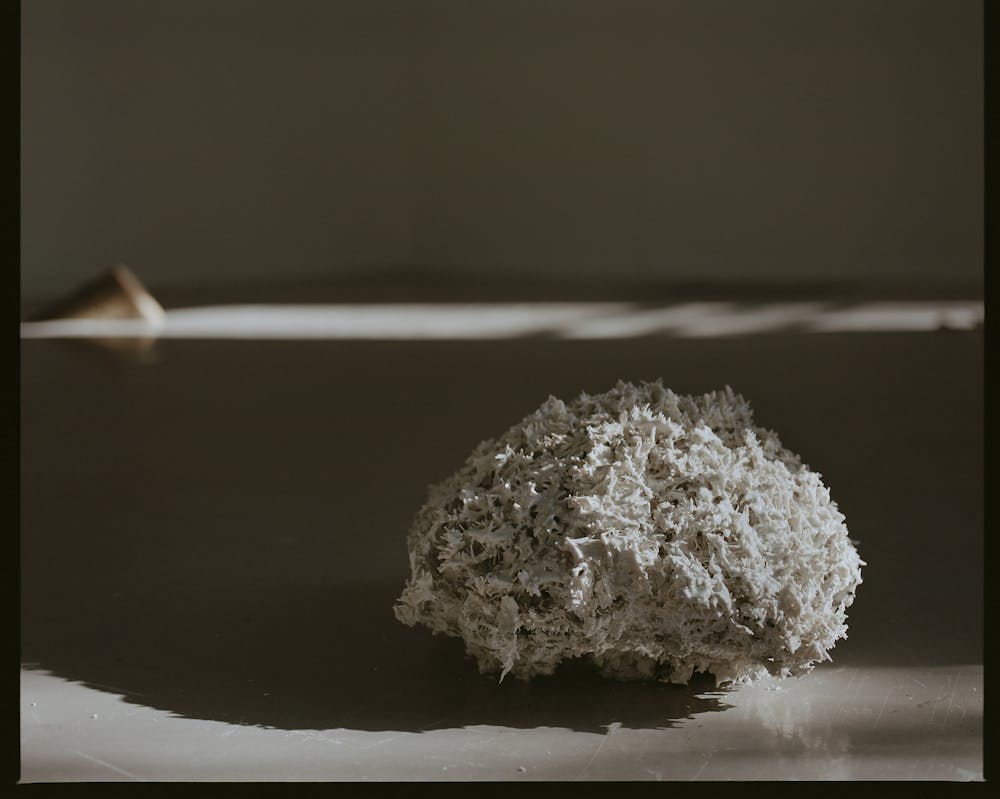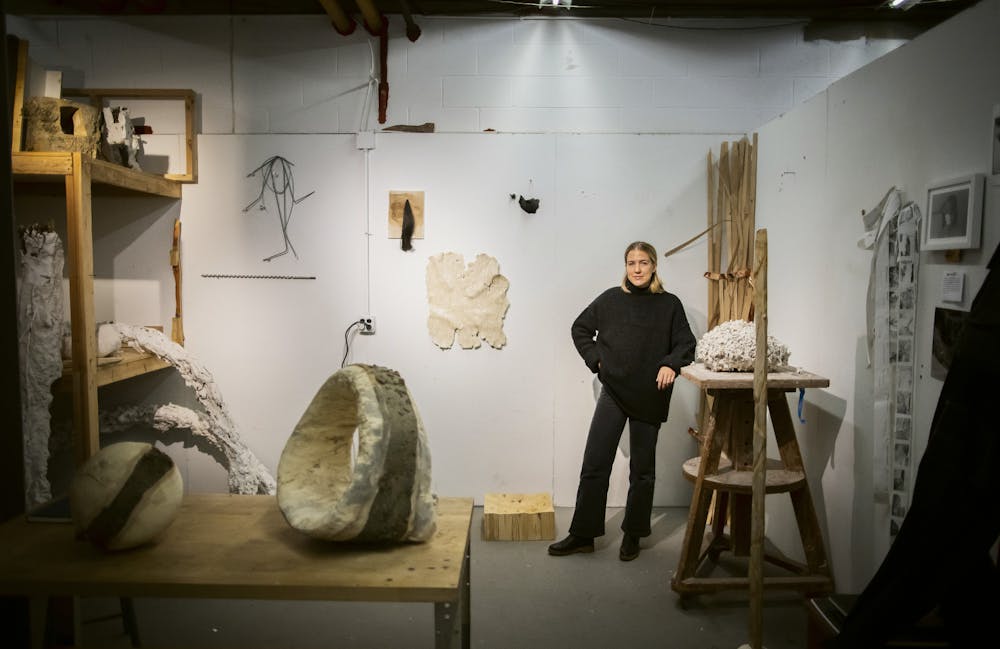Victoria Antoinette Megens (MFA ‘24) is committed to producing environmentally mindful art that plays with the intersection between the contrasting and colorful landscapes of nature and the drab and gray of city life. Hailing from Canada’s Pacific Northwest, Megens' upbringing seeded her artistic journey and painted the message she aims to convey through her work: opening peoples’ minds to new perspectives in the world. Megens' art strives to emphasize the coexistence of humans and nature.
Growing up off the coast of Canada on Pender Island, a rural community off the coast of Vancouver, Megens has been surrounded by nature for as long as she can remember. Reflecting on her seemingly unlimited access to the outdoors growing up, Megens recounts many moments in which she was able to foster the deep connection she has with the natural world. “I definitely would say I'm an experience based person. So a lot of my defining moments were being outdoors and learning about nature. Like I would have encounters with different types of bears, and in school, we learned how to negotiate with megafauna, and had this toolbelt of information so we knew how to survive in the forest,” she says.
After high school, Megens traded her hiking gear for a metro card, moving to France. “There wasn’t a clear line to studying art right away. Instead, I just started by learning French, traveling, working, and trying to understand the landscape and complexities of this new area of the world,” she says.
In escaping her comfort zone and exploring everything France had to offer, Victoria's academic interests were sparked by landscapes within the built environment. “I became interested in the parks there. They were a totally different style from the Cornelia Oberlander style of parks that existed in Vancouver, like Stanley Park. Those first years in France allowed me to grow and gain a lot of perspective,” she recounts.
In an effort to pursue her newfound interests, Victoria went on to attend the École nationale supérieure des Arts Décoratifs, or in English, the National School of Decorative Arts in Paris. Originally drawn to the multidisciplinary nature of the program, it was here that she found apassion using art as a vehicle to explore the relationship between nature and humans. She was able to take courses in spatial design, art, animation, and drawing, all of which are “still a part of [her] world now.”
There, she developed some of her favorite academic memories. “My favorite memory from there was back in 2018 when I was working on a project for the 50th anniversary exhibition of the 1968 Student Revolution at the Centre Pompidou in Paris," Victoria says. Students came from art schools in France, Switzerland, and other countries across Europe to create "atelier vejettable," or "flower bricks," in honor of the bricks students threw during the 1968 protest. The flowers on the bricks symbolized the growth of a new era in France after the student revolution. Victoria and her classmates built the bricks with the local community using native flowers. They placed their finished flower bricks on rooftops to show them off. "I think this memory holds strong for me since I was able to interact with people from so far away while also directly interacting with the public through my art,” she says.
After completing her time in Paris, Victoria went on to attend Penn to continue her education where she is in the last year of her MFA studies. Since arriving here, she has continued to create environmentally-based art and architecture through a variety of pieces.
“I did a piece last year that is called Bush, essentially, it is a piece I made by reconstructing pine needles. I typically walk or bike to campus from where I live in South Philly and I started noticing these pine needle branches everywhere being swept to the side of the road, so I started collecting them. I was interested in the afterimage of these natural resources and the different cycles and relationships between materials. So I decided to dip them into liquid porcelain and fire them in a kiln until the product was something of an exoskeleton that looked like a bush,” she explains.

While she is now in her final year at Penn, Victoria’s career as an artist has just begun and she has a plethora of upcoming works she is yet to present. “I’m currently working on learning more about the history of ordinary objects that have become invisible in daily life. Like, parquet flooring and artificial puddles,” Victoria says. On March 21st, she presented her work at the MFA Thesis Show.
As she finishes her time on campus and looks forward to the worlds of art she has yet to explore, there is a lasting impression she intends to leave with her work. “I’m interested in the subtleties of experience, how the environment and people can shape the timeline. My hope is that I can offer a revolution centered around this. I’m really interested in providing opportunities for people to think from different perspectives, and so if I am able to offer that, then I’m happy,” she concludes.

